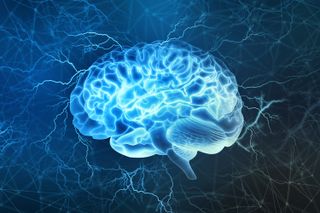How Drug Addiction Hijacks the Brain

You've probably heard of the brain's reward network. It's activated by basic needs — including food, water and sex — and releases a surge of the feel-good neurotransmitter dopamine when those needs are met. But it can also be hijacked by drugs, which lead to a greater dopamine release than those basic needs.
But the reward network isn't the only brain network altered by drug use. A new review concluded that drug addiction affects six main brain networks: the reward, habit, salience, executive, memory and self-directed networks.
In 2016, a total of 20.1 million people ages 12 and older in the U.S. had a substance-use disorder, according to the National Survey on Drug Use and Health, an annual survey on drug use. And drug addiction, regardless of the substance used, had surprisingly similar effects on the addicted brain, said the new review, published yesterday (June 6) in the journal Neuron.
The review looked at more than 100 studies and review papers on drug addiction, all of which studied a type of brain scan called functional magnetic resonance imaging (fMRI).
More than half of the studies out there look at the effects of drug use on the reward network, said Anna Zilverstand, lead author of the new review and an assistant professor of psychiatry at the Icahn School of Medicine at Mount Sinai in New York City. [7 Ways Alcohol Affects Your Health]
"Because we showed that the effects are very distributed across the six different networks … [we can conclude that] an approach that only looks at one of these networks isn't really justified," Zilverstand told Live Science. "This [finding] will hopefully lead other researchers to look beyond the reward network."
For example, the memory network is pretty much ignored in research on substance-use disorders, Zilverstand said. This network allows humans to learn non-habit-based things, such as a new physics concept or a history lesson. Some research has suggested that in people with substance-use disorders, stress shifts the person's learning and memory away from the memory network to the habit network, which drives automatic behavior, such as seeking and taking drugs.
Sign up for the Live Science daily newsletter now
Get the world’s most fascinating discoveries delivered straight to your inbox.
Another less-studied network is the self-directed network, which is involved in self-awareness and self-reflection, the review said. In people with addictions, this network has been associated with increasing craving.
Two other networks are involved in substance-use disorders: The executive network is normally responsible for goal-maintaining and execution, but drugs can alter this network as well, reducing a person's ability to inhibit their actions. The salience network picks up important cues in a person's environment and redirects the individual's attention to them. (In people with drug addiction, attention is redirected toward drugs, increasing craving and drug-seeking.)
Which comes first, the brain activity or the drug use?
"For me, the most surprising [finding] was how consistent the effects were across addictions," Zilverstand said. What's more, "the fact that the effects are quite independent of the specific drug use points to them being something general that might actually precede drug use rather than be a consequence of drug use."
Zilverstand said she hopes that more studies will look at whether some people have abnormal brain activity in these six networks naturally and if that activity just gets exacerbated if they begin drug use. It's important to know if some of these traits precede drug use; if that's the case, it might be possible to identify people who are prone to addiction and intervene before an addiction begins, she said.
Some research has pointed toward this possibility already. For example, studies have shown that some people have "difficulties … inhibiting impulsiveness before drug use," Zilverstand said. "Some of these impairments precede drug use, and they may become worse with more drug use, but they exist before the problem escalates."
The good news, however, is that activity in four of these networks — executive, reward, memory and salience — moves back toward "normal" once drug use ends. "We know that four of the networks (partially — not fully) recover but not yet what happens to the other two networks," Zilverstand said in an email.
Zilverstand added that she's particularly excited about an ongoing study called the Adolescent Brain Cognitive Development (ABCD) Study, which is tracking 10,000 children across the U.S. from around ages 9 or 10 to age 20 (the children are now around 13). Some of these individuals will inevitably become addicted to drugs, most likely marijuana or alcohol, Zilverstand said.
"We'll be able to see if the effects that we found [in the review] exist in youth who have not yet abused drugs," she said, and she predicted that researchers will be able to find a lot of the effects identified in the review in the six brain networks.
The authors noted that because some regions of the brain are very small — for example, the amygdala, which is found toward the center of the brain — the studies can't identify strong signals from those areas on brain scans. So, it's possible that drugs affect additional networks in the brain that are hidden because of the limitations of our technologies, Zilverstand said.
"We don't want to conclude that [those effects] don't exist," she said.
Originally published on Live Science.

Yasemin is a staff writer at Live Science, covering health, neuroscience and biology. Her work has appeared in Scientific American, Science and the San Jose Mercury News. She has a bachelor's degree in biomedical engineering from the University of Connecticut and a graduate certificate in science communication from the University of California, Santa Cruz.
